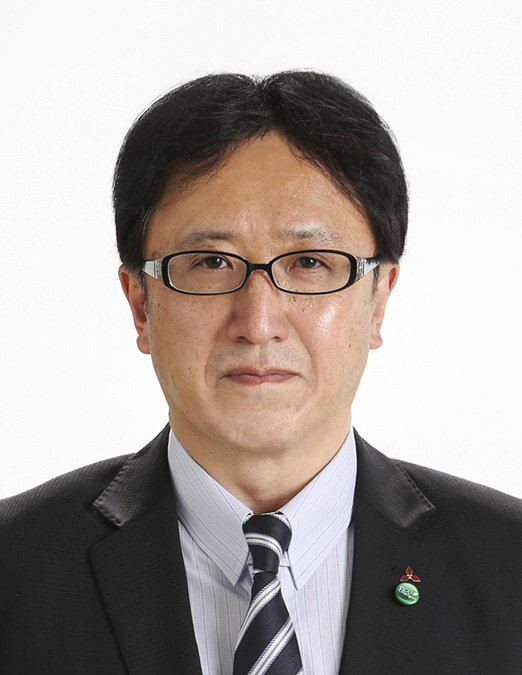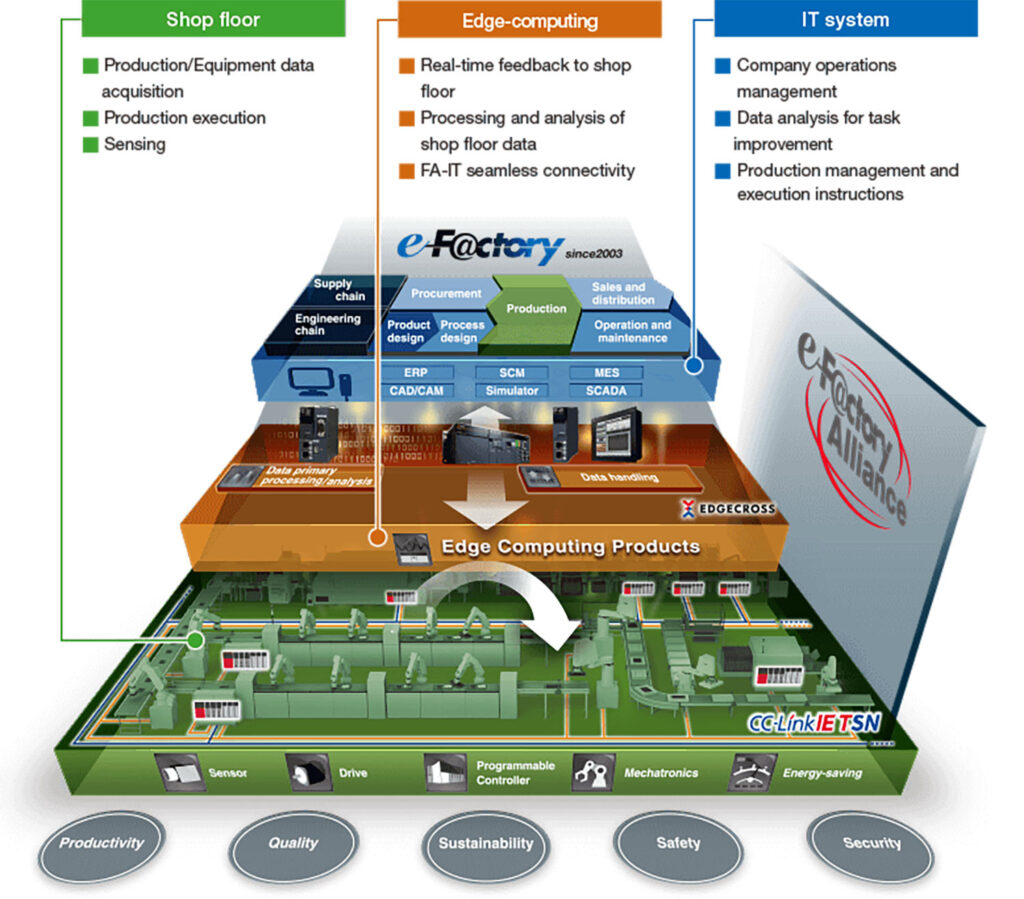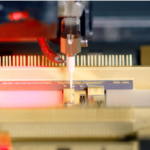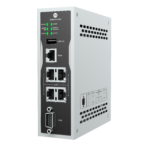ASIA ELECTRONICS INDUSTRYYOUR WINDOW TO SMART MANUFACTURING
Proven Software Powers Mitsubishi’s e-F@ctory Solution
The Industrial Products Marketing Division, Factory Automation Systems Group of Mitsubishi Electric Corporation oversees power distribution controllers, controllers, drive controllers, and industrial robots. Moreover, it supports Japanese companies operating not only in Japan but overseas as well.
In a recent interview with AEI, Tomoaki Kotani, Group Vice President, Industrial Products Marketing Division, Factory Automation Systems Group, Mitsubishi Electric Corporation, described the results of business in 2021 and prospects for 2022.

Investments, Supply Chain Issues
AEI: How do you look back 2021?
Kotani: The demand brought about by the stay-at-home trend in 2020 amid the COVID-19 pandemic continued and even expanded in 2021. In fact, this demand expanded in diverse fields. These include personal computers, smartphones, fifth-generation (5G) communications, electric vehicles (EVs), data centers, and physical distribution to consumer electronics.
Consequently, the robust demand prompted manufacturers to increase investments in plants and equipment. Orders increased at a pace surpassing record high.
Meanwhile, various components, such as semiconductors, electronic components, resins, and harnesses, suffered supply shortage. Particularly, the situation where production of factory automation (FA) equipment could not keep up with demand continued.
AEI: What are prospects for 2022?
Kotani: Investments in semiconductors will surpass those in 2021. I expect that brisk investments in EVs will continue. Although there are concerns about component shortages, the FA industry will maintain high level of growth in 2022.
AEI: Can you discuss your company’s production system?
Kotani: In Japan, we are producing products for both the domestic market and for overseas. In China, particularly in Changshu, we are producing servos and other products. At the same time, we produce inverters for the Chinese market in Dalian.
We have increased the number of engineers in our Development Centers in Changshu and Dalian Plants to develop products that meet local needs. We also plan to construct a new plant in Japan’s Aichi Prefecture to bolster the production of Nagoya Works, which is a hub of our company’s FA Systems business. In India, we will establish a new production base in TALEGAON in Pune, with the completion slated for FY2023. We plan to expand the production system in India as a global production base.

FA Integrated Solution
AEI: How do you plan to promote e-F@ctory FA integrated solution using internet of things (IoT) technologies?
Kotani: Manufacturers in Japan and abroad have high interest in automation of production and labor savings. The recognition of e-F@ctory has been increasing, and its penetration into the market has been advancing. We have been promoting e-F@ctory since 2003. Thus far, we have delivered the solution to about 35,000 customers around the world. At present, about 1,100 partner companies with advanced technologies and abundant know-how link with e-F@ctory.
AEI: The weight of software is high for e-F@ctory. Can you discuss more of this software for e-F@ctory?
Kotani: Recently, we have been expanding software to make e-F@ctroy easier to use. GENESIS64 software for SCADA (monitoring, control), which is already in the market, has received high evaluations from customers.
GENESIS64 visualizes all data in factories. These data include conditions of production equipment, manufacturing status, and quality. It unitarily manages and analyzes these data, and improves production capacity, quality, and operation rate.
These contribute to resolving customers’ issues, including production improvement and reduction of total cost of ownership (TCO). By installing GENESIS64, for example, manufacturers can monitor equipment and check the status of production of factories operating overseas, like in China. Earlier, we offered GENESIS64 Advanced, and additionally released GENESIS64 Basic.
AEI: What kinds of software do you plan to release in the future?
Kotani: We plan to release a three-dimensional (3D) simulator, which applies digital twin technology. Connecting the simulator with our company’s MELSEC-Q/iQ-R sequencer to perform on-desk simulation to verify control software using a 3D design model (virtual mechanical model) of equipment and systems without using actual equipment significantly reduces the time required to start the equipment.




